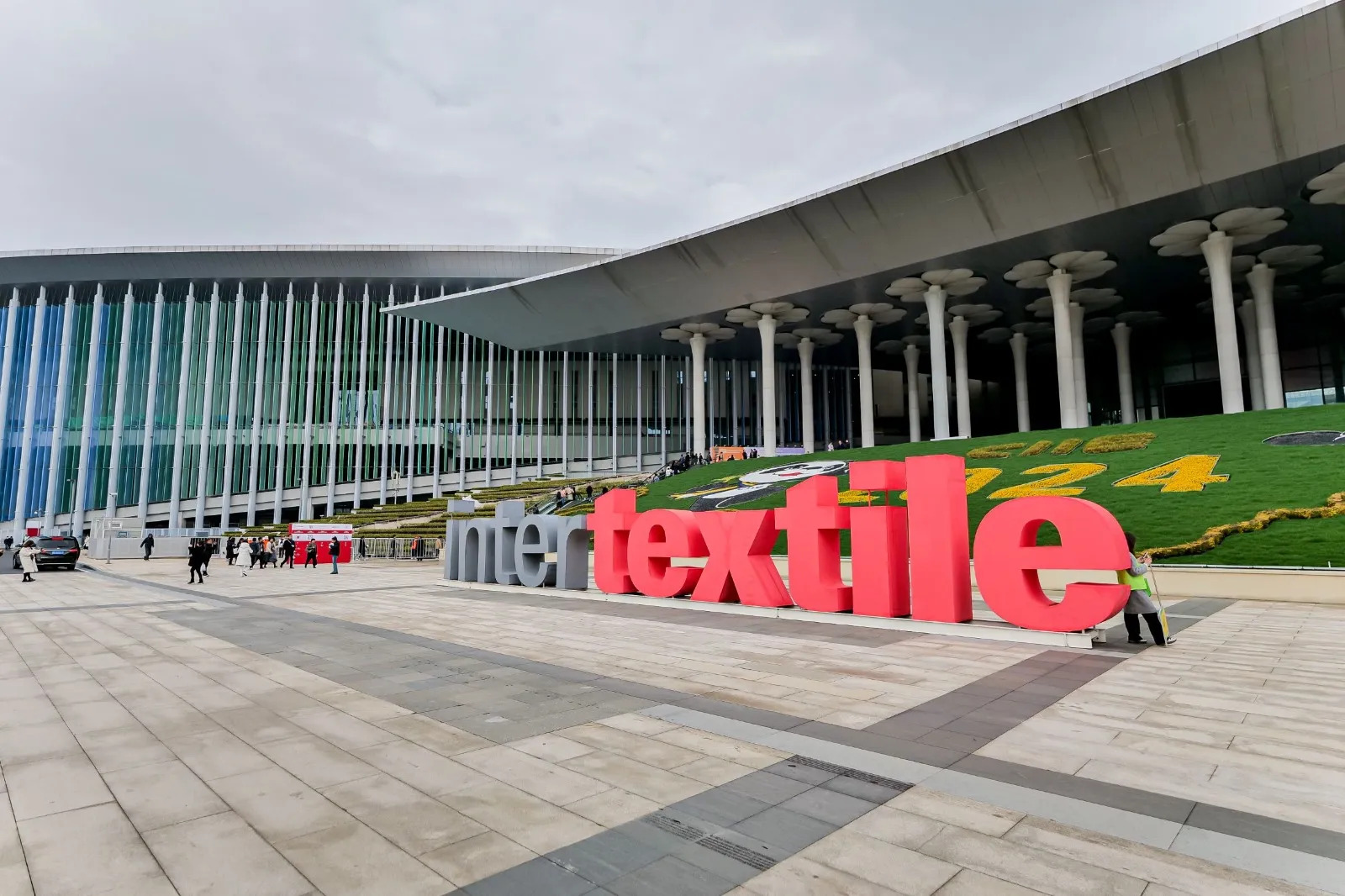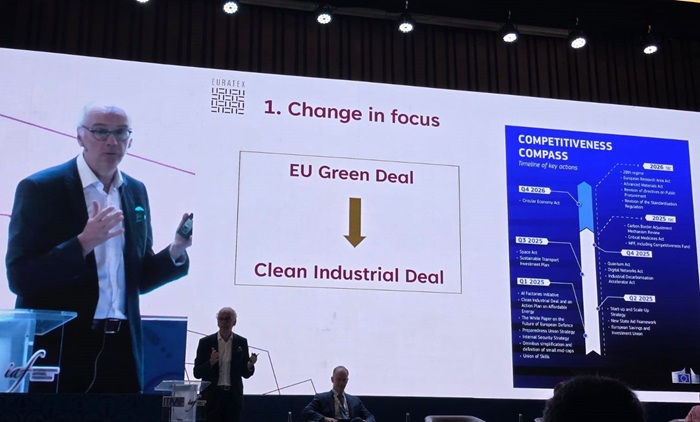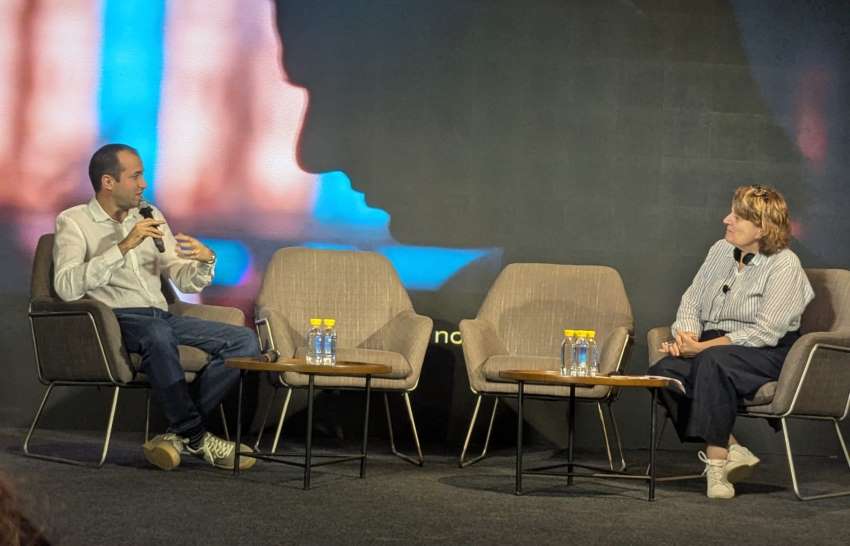FW
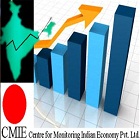
CMIE’s CapEx database reveals, readymade garments industry is expected to witness a healthy completion of projects in 2015-16. During the year, nine projects envisaging an aggregate investment of Rs 5.1 billion are likely to be executed.
RMG industry rides upward growth curve
Of these, one project by Mandhana Industries has already been commissioned in June 2015. The company invested a Rs one billion on setting up a new garment manufacturing unit at Baramati, Maharashtra. This unit has an annual garment manufacturing capacity of four million pieces. Project completion in the industry is likely to remain healthy even in 2016-17. During the year, four projects at an investment of Rs 6.5 billion are expected to be commissioned.
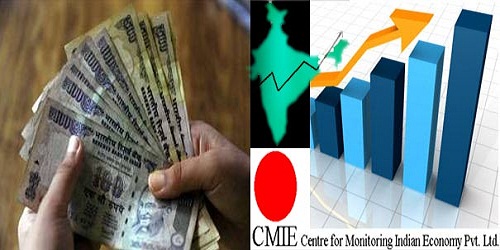
Under the Scheme of Integrated Textile Parks (SITP) by Ministry of Textiles, three integrated apparel parks are expected to be commissioned. EIGMEF (Eastern India Garment Manufacturers & Exporters Federation) Apparel Park is developing an integrated apparel park at Kolkata, West Bengal. On completion by September 2016, an annual capacity to manufacture 19.8 million pieces of garments would be installed at this park. The project is expected to create a direct and indirect employment for 8,000 people and 12,000 people, respectively.
Rajasthan Integrated Apparel City is likely to invest Rs1.9 billion on setting up an integrated apparel park at Bhiwadi, Rajasthan. The park is expected to be ready by March 2017. West Bengal Hosiery Park Infrastructure (WBHPIL), is in the process of setting up a hosiery park at Haora, West Bengal. The company is likely to spend Rs 850 million on the park which will be built over 100 acres of land. It is expected to accommodate 170 small and medium garment manufacturing units. The park is likely to be commissioned by March 2016.
With an increase in overseas demand for knitwear, KPR Mill plans to invest Rs 1.8 billion on setting up a green-field garment manufacturing facility at Tirupur, Tamil Nadu. This facility will have a capacity to produce 36 million garments per annum. The project is scheduled to get completed in March 2016. Woodlands is expected to invest Rs 600 million on setting up a new garment manufacturing unit at Greater Noida, Uttar Pradesh. Commercial operations at this unit are expected to start in July 2015. Dollar Industries plans to set up a fully-integrated thermal-wear and outer-wear manufacturing plant at Ludhiana, Punjab.
Ashapura Intimates Fashion is developing a lounge-wear manufacturing facility worth Rs 270 million at Vapi, Gujarat. The company will install an annual garment manufacturing capacity of seven million units at this facility. On completion by December 2015, this project is expected to generate an employment opportunity for 2,000 people. Lovable Lingerie plans to invest Rs 228.4 million on its capacity expansion project located at Bangalore, Karnataka. By March 2017, the company will enhance the plant’s annual inner-wear manufacturing capacity by 2.5 million units to 5.5 million units. So far, the company has invested Rs 216.2 million on the project.
Under the North East Region Textile Promotion Scheme (NERTPS), Ministry of Textiles is planning to develop apparel and garment making centres at Guwahati in and Gangtok in Sikkim. Each centre will come up at an investment of Rs 181.8 million and will have three units, each having 100 machineries to manufacture garments. Each centre is expected to generate a direct employment opportunity for 1,200 people. With an investment outlay of Rs 120 million, KGI Clothing is setting up a garment manufacturing plant at Chittoor, Andhra Pradesh. Bhandari Hosiery Exports also aims to invest Rs 120 million on its brown-field project located at Ludhiana, Punjab. By March 2016, the company plans to expand its annual multi-faceted fabric manufacturing capacity from 1.3 thousand tons to 3.3 thousand tons.
Around 100 textile spinning mills producing blended yarn including polyester cotton using synthetic material pulled shutters on their units across the state on Saturday. The decision was taken after the Indian Textpreneurs' Federation (ITF), synthetic spinners' group decided to keep their units shut during the weekend due to steep fall in yarn prices.
Industry experts say that stoppage of production over the weekends would lead to a 25 per cent-30 percent fall in production output, which is expected to reverse the constant fall in yarn prices. About 100 mills, which are a part of ITF, have a total installed capacity of nearly 19 lakh spindles and produce about 5.5 lakh kg of yarn per day. Prices of 56's count polyester cotton yarn, which was ruling at Rs190 per kg, is now being quoted at around Rs158 per kg.
Out of the total installed capacity of around two crore spindles in Tamil Nadu, about 40 lakh spindles produce blended yarns such as polyester cotton, which are utilized by fabric markets in Ichalkaranji, Malegaon, Bhiwandi and Bhilwara. Over 200 spinning mills in the state produce around 40,000 tonnes of blended yarn per month, which accounts for about 20 per cent of the total yarn output in the state.
Leading international trade fair for lingerie, swimwear materials and accessories, Interfilière Paris was thronged by nearly 10,500 visitors in despite the hot weather. The fair took place early this month and exhibited a huge range from the best and innovative collections. Around 71 per cent foreign visitors were a part of the fair, wherein UK was the most represented country, followed by Germany. Other countries that participated were: the US, Italy, Spain, Netherlands, Belgium, China, Hong Kong, among others. Intimates and beachwear brands dominated the fair. However, even ready-to-wear brands and designers made their presence felt. This year, 57 newcomers participated compared to 33 last year.
The overall response and feedback to the fair was positive, even though the textile market remains tense. Ria Stern, Hyosung, Creora, stated that in the wake of political and economic scenario, they had expected a subdued session, However, the show turned out to be a success with the key visitors being present.
Activewear, half-way between sportswear and intimates, was popular since it is a much sought-after market today. Besides, visitors were also looking for new collections with a focus on fibres. Vibrant colours, floral and tropical motifs from textile designers, were showcased at the fair.
In February 2015, Première Vision Pluriel became Première Vision Paris. The sole organiser of this ensemble of six shows, all mutually complementary in terms of businesses and know-how, Première Vision then also launched its new brand policy, to reinforce the unique, unparalleled offer proposed by these six shows. The goal has been to promote and coordinate the different professions with their specificities at the heart of a single, homogenous, more coherent and more efficient event.
Based on a study conducted during the February shows, exhibitors confirmed the essential role of the Paris event and the consistency of its strategic choices, 93 per cent of exhibitors at the Première Vision Paris shows confirmed their strong adherence to the new brand policy and the new strategic directions taken by Première Vision. Nearly 89 per cent of them also attest to the leadership of Première Vision Paris, and consider this international event to be the most important in the industry.
Spinners, weavers, accessory makers, design studios, tanners, garment manufacturers – and visitors – buyers, accessory and fashion brand designers and heads of fashion companies are either seeking to gain visibility and develop solid business relationships or looking for inspiration and innovative collections that will make their products stand out. Driven by this dynamic, the next edition of Première Vision Paris from September 15 to 17 at the Parc des Expositions in Paris-Nord Villepinte will focus on the development of interactions and cross-collaborations between the six shows’ business activities, while further promoting their individual strengths.
Yarns and fibres, fabrics, leathers and furs, designs, accessories and components,manufacturing… during three days, the global event for fashion professionals will present to the world’s fashion players a rich and exclusive offer. This offer, now tied to the new brand policy and the full integration of the Première Vision Paris shows, now makes it possible to develop a transverse collaboration of know-hows, to create connections between exhibitors and showcase interactions between the different businesses. While each show maintains its specificities and continues to develop its own offer, synergies between shows and between exhibitors will be strengthened as of this next edition. Closer ties, relocations or reclassifications have been made, reflecting the overall aim of Première Vision to offer a structured event that is more effective and consistent.
Some 153 new international companies have been chosen for the six shows overall. Among these exhibitors are 19 companies returning to the shows after several seasons of absence. Altogether, whether loyal or new, some 1,915 exhibitors from 55 countries will present their collections and latest seasonal developments at Première Vision Paris in September.
www.premierevision.com
A silk exhibition will take place in Thailand from August 7 to 11. The aim is to motivate younger generation to take part in the conservation of silk which is a cultural heritage of Thailand. This year the annual event comes under the theme ‘Native Silks of Thailand’ and aims to showcase and promote high-quality Thai silk and sericulture-related products.
Sericulture is a profitable occupation in Thailand. During the five-day fair, visitors will have a chance to admire the 10 outstanding patterns of Thai silk textiles and demonstrations on silk weaving. Also on display will be new designs of silk couture and silk clothes designed by the new generation.
Thai silk is usually soft but has a relatively coarse texture with uneven, slightly knotty threads. This quality makes it extremely suitable for weaving by hand. Thai silk has a magnificent, rich, exotic beauty and, with proper care, can last a century or more. Thai silk has triangular fibers which reflect light like prisms. It also has layers of protein that gives it a natural sheen and makes it lustrous and smooth. Silk is an insect fiber and superior to any animal or plant fiber. Thai silk fiber is strong but lightweight, elastic but supple.
Apparel imports created a new record in May despite the trend of ‘Made in USA’. Data released by the US Commerce Department states that apparel imports rose by 4.9 per cent in May compared to the same periods last year, and touched over $7 billion. This capped three consecutive months of year-over-year growth.
Retail apparel is growing by at least 2 per cent. This indicates that imports are gaining compared to domestically-produced goods. Overall imports fell by 7.2 per cent in that month to $188 billion. The fall was due to reasons like a by big decline in oil prices and a drop in share value of manufactured and consumer goods. This also includes machinery and industrial supplies.
Apparel import growth was 3.4 per cent in May, ahead of April’s increase and this was the biggest jump in more than a year. This was based on a 12-month smoothed basis, which corrects for volatility of data in a particular month. The top five sourcing destination for US apparels this year were: India, Vietnam, China, Bangladesh and Indonesia. Though Indonesia’s apparel exports to the US has dropped in the first five months compared to last year.
ATDC organised a workshop on skilling India at their different centers and campuses pan India, July 15 and 16. The government plans to provide financial assistance ranging from Rs 5,000 to Rs 1.5 lakh to 34 lakh youth seeking to attend skill development programs over the next five years. 160 training partners and 1,722 trainers are connected with the National Skill Development Mission.
Meanwhile Julferker Ali Bhutto, a student of ATDC’s Rohini center in Delhi, will represent India at the World Skills Meet from August 14 to 17 to be held in Sao Paulo, Brazil. He won at the national level in the fashion technology section in world competitions.
ATDC is launching apparel manufacturing and entrepreneurship as a new three year program, which will open up avenues for Gen next entrepreneurs. There are currently 12 million people directly working in the apparel sector. It has the highest employment potential with nine million additional people required till 2022.
ATDC is the largest skill vocational training provider in the country with over 176 centers having trained over 165,000 candidates. The target is to train 78,000 candidates over the next two years across ATDC-SMART centers. A new version of Skill Development Policy 2015 has been brought out with a separate section on entrepreneurship.
www.atdcindia.co.in/
The weakening euro has affected Turkey's ready-to-wear clothing sector, which sustained $1.2 billion in losses in exports on a year-on-year to basis in the first half of this year. Though Greece has compromised on a solution that would help it deal with the debt crisis, the lingering depreciation of the euro against the US dollar has had huge impact on Turkish exports.
The ready-to-wear textile exports of Turkish companies dipped, on a unit basis, by 85 million in the first half compared to the same period a year ago and stood at 3.565 billion. İstanbul Apparel Exporters Association (İHKİB) President, Hikmet Tanrıverdi released a statement revealed that total export volume of the sector faced a 13.3 per cent decrease year-on-year and decreased from $9.4 billion to $8.2 billion in the first half.
Fluctuations in euro-dollar parity was the main reason for these losses and it was foreseen that yearly losses would drop to as low as 1.8 per cent when compared using a parity-adjusted calculation, added Tanrıverdi. Turkey’s apparel sector suffered losses in exports to Germany in volume terms was 23.6 per cent in the first half of 2015. To France, the loss was 28.2 per cent, Denmark 28.5 per cent and Belgium was 25.7 per cent.
The proposed legislation, ‘textile industry development, promotion and standard Act’, has been abandoned by the Ministry of Textiles. The legislation was aimed at overriding multiple laws and ordinances under its administrative control. According to sources work on important issues regarding proposed textile bill, textile policy, and Export Development Fund (EDF) has almost come to a standstill.
The absence of a full-time minister and lack of direction on whether or not the textile industry should be merged with the commerce industry are just some reasons for this state of affairs. Sources state that work on the final draft of the proposed Act was completed early this year after consulting with other stakeholders. The Act was pending for the lat six years and now, the proposed legislation was ready to be submitted to the Law Division for vetting; yet it is around seven months and the Law Division has not received it.
The Federal Textiles Board was notified and restructured to facilitate the textile stakeholders. The platform was supposed to serve to monitor the implementation of Textiles Policy (2014-19), along with rationalisation of cess/surcharges that is applicable on textiles value chain industry and its exports and utilisation. Besides, the Research, Development and Advisory (RDA) Cell was set to be the secretariat of the Board. Moreover, the existing RDA Cell officers were supposed to be responsible for the overall implementation and monitoring of Textile Policy. The Board, however, is yet to meet after all this time.
China will host the annual Yiwu Tex fair from Nov 30 to December 3. This is a textile machinery exhibition that a focuses on knitting and hosiery industries, targets advancement, energy saving and automation technology, providing a one-stop platform for knitting and garment industry professionals. The show promotes green and sustainable production, helping enterprises to grasp current business opportunities.
The trade fair presents new textile technology applications in knitting and garments, medical hosiery, seamless underwear, functional sportswear, interior auto parts, footwear, home textile and many other sectors. A series of events and forums will be held concurrently with the show to discuss hot topics of the industry and analyse latest design trends, offering a combination of theory with visual display for buyers to experience the latest fashion industry topics.
A knitwear collection will be displayed to showcase the best knitting technology. The show will feature forums on the latest trends in lingerie and knitted apparels, functional sportswear. The knitting industry occupies an important position in China's textile industry. In 2014, export value of China’s textile products increased 4.06 per cent compared to the previous year. Knitwear accounts for 44 per cent of the total textile export value.
www.yiwutex.com/

